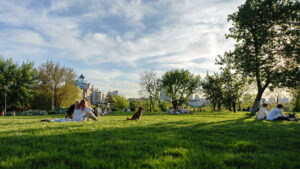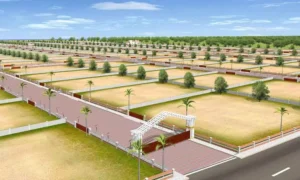How To Lay Artificial Grass

Once you have ordered and received your synthetic grass rolls or gravel grids for example before you start, ensure you have not forgotten anything. Your soil must be carefully prepared ground preparation on loose ground or hard ground preparation. You have drawn up an installation plan and calculated your needs for supplies and equipment.
All that remains is to set up your artificial lawn, and here is the method to achieve a perfect installation.
Arrangement and installation of synthetic turf
Starting point and laying direction of artificial turf strips
For a perfect rendering, consider the orientation of the strands, that is, the direction in which the strands are lying.
It is very important to keep this same direction for all the lengths. Position and unroll your first roll according to an established plan.
Cut and position strips of synthetic turf
The cuts are always made on the back of the lawn (black latex side) using a solid cutter equipped with a blade in perfect condition.
Follow the tuft lines (seams) along the length and always cut between two lines, staying as straight as possible. This will ensure invisible junctions during future strip joints.
It may be useful to use a mason’s ruler to make straight cuts for long cuts.
Margining Of The Edge
The lawn must first be trimmed. The bare selvage that borders the artificial grass is only used to handle the rolls in the factory. It must be removed, and the first line of seam whose strands, often crushed, risk hindering a perfect junction. To do this, cut on the latex side between the first 2 seam lines and stay as straight as possible. You will then renew the operation on the second edge of your roll (only on 4m rolls).
Position your false lawn lengths and make the border cutouts
Always following your plan, cover the entire surface to be treated. Place each long edge to edge so they join perfectly and ensure the strands are in the same direction. Make all the finishing cutouts on the periphery. Position your false lawn lengths and make the border cutouts 3 Position your false lawn lengths and make the border cutouts 2 Position your false lawn lengths and make the border cutouts 1
Manage the obstacles in the middle of the lawn: tree trunks, decorative elements, rocks, etc.
Certain elements on your ground may hinder your progress.
Unroll the grass to the top of this obstacle and locate the place where the grass touches. Then cut so you can pass your grass strip on either side of the annoying element. To simplify this task, you can fold the grass upstream of the obstacle and cut it before replacing it. Your length, separated in two after the obstacle, must be glued using pre-glued tape (see the paragraph below on the junctions).
As you can see in the photo above, the cutout was made on the left side of the tree. In this example, it is on the left that the cutout is the least important. We, therefore, minimize the need for pre-glued tape. Keep in mind that the orientation of the cut depends on your terrain. Choose the least complicated and least expensive solution.
Finally, cut the excess grass around the element. Please note that this length cannot be moved once these cuts have been made. Be sure to make fitting adjustments before cutting.
Make Invisible Junctions Between Two Lengths Of Synthetic Grass
The junctions are made on the back of your lawn. At each lawn connection, fold the two lengths and place a pre-glued strip in the middle (protective film upwards). Replace the turf and check that your fittings are well edge to edge. Once glued, the joint will be final.
Start from the edge of your two lengths and pull the protective film upwards to release the self-adhesive side. Exert pressure so the grass adheres to the strip, ensuring the strands do not pass under the grass and become stuck.
Continue along the full length, gradually pulling the tape protector upwards and applying pressure for adhesion.
Make invisible junctions between two strips of synthetic grass 1 Join two pieces of grass Jointing synthetic turf rolls
When the finishing brushing has straightened the strands, your junctions will be completely invisible.
Whatever the nature of the ground, “never pose without a pause!”
Once all of your synthetic turfs have been installed, once the joints between the strips have been made, it is important to let your turf “find its place” before fixing it to the ground. To do this, allow a sufficiently long period for the entire surface to react to temperature variations. Where it can be particularly hot (on a roof terrace or in the midday sun), it is preferable to make this break last at least 24 hours.






